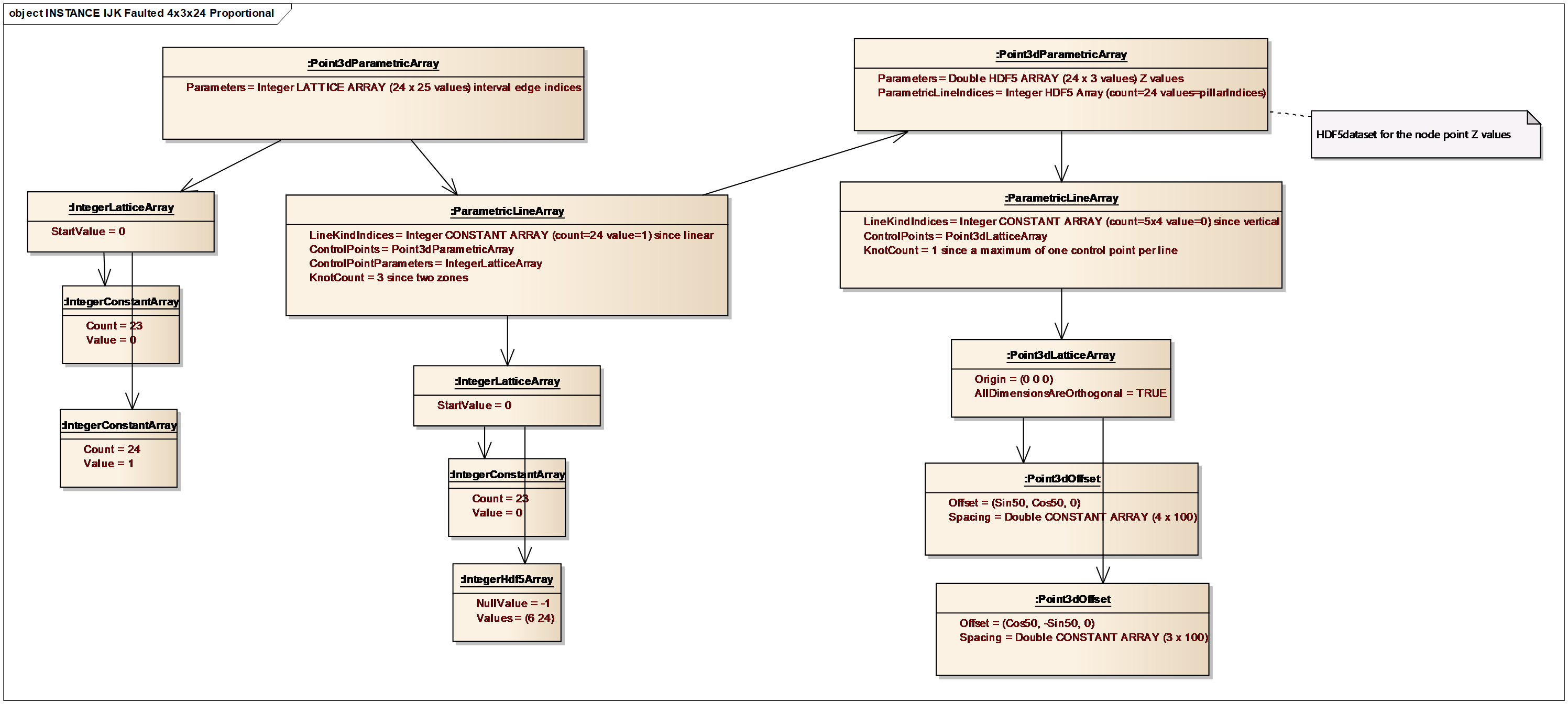11.19.6 IJK Grid with Proportional Layering
| Topic Version | 1 | Published | 09/11/2015 | |
| For Standard | RESQML v2.0.1 | |||
In Figure 11.19.6-1 , we can see how this example is built on the 4x3x2 faulted IJK grid, but now we take advantage of the parametric form of proportional layering, to convert the two layer model to a two zone model with 6 layers in the first zone and 18 layers in the second zone, for a total of 24 layers.

Specifically, as can be seen in Figure 11.19.6-2 , the parameterization takes advantage of the interval edge index, which in this case takes on the values of 0…24. Interval edges 0..6 describe the top geologic zone and interval edges 6..24 describe the bottom. Along a single coordinate line it is not necessary to specify all 25 nodes explicitly. Instead nodes 0, 6, and 24 can be specified, and linear interpolation can otherwise be used to define layers within each zone. This is shown in the figure. The original points from the 4x3x2 grid now arise as the control points. There are now two sets of parametric lines. The first set consists of 24 straight lines, with three control points and three parametric values per line (one per coordinate line). The second set consists of 5x4 vertical lines, with one control point per line (one per pillar). To minimize any ambiguity in indexing, the second set of parametric lines now includes the explicit parametric line indices, although they are not strictly necessary.


Notice in Figure 11.19.6-3 that the integer lattice constructions, which have two dimensions, only have the second dimension (dimension=1) in the instance diagram. This is because the parameters for proportional layering depend only on the interval indices. In contrast, the generalization of this construction to eroded and truncated layering would, in general, require explicit parametric values that vary from line to line.